Pareidolia PART TWO
Epiphany versus Apophany
May, 2024

Previously on Pareidolia...
In Part One I introduced Epiphany, Apophany, Pareidolia, and the Fusiform Face Area. Seeing faces in chaotic patterns is an important shared experience. It helps divide the Subjective from the Objective, Illusion from Reality. An Illusion is something that is not what it seems; a Delusion is something that is falsely believed. Hallucination is a false sensory experience that is not even generated by real stimuli. Hallucinations and Delusions are Subjective experiences. The experience of an Illusion can be Objective, but care must be taken when assigning it meaning.
Archetypes
If we all can see the face on Mars, it's an objective illusion. I bring up the role of the Fusiform Face Area to suggest that at least one type of mental construct is programmed into our brains. But what of shared visions, separated by time and stimuli? If someone says they had a "vision," they are distinguishing the experience from a material-driven sensation. There is no expectation that others would "see" the same thing at the same time. It feels entirely subjective. "I had a vision" versus "Did you see that?"
Repeating patterns of imagination across many people, across many cultures, and across time reveals the objective nature of what are called Archetypes.

The type of archetypes that Jung refers to are naturally occurring due to a "Collective Unconscious." Alternatively, archetypes are intentionally used as literary devices (following "Hero with a Thousand Faces"), as they are considered to create more compelling stories. My question is whether Carl Sagan himself had a coinciding vision of a "Wheel Within a Wheel" linked to prime numbers. Was the "Machine" something originally in the book Cosmos or was the design a Movie Director's creation? Answers would be in the book, so for PART TWO here, I read it.
5-4-3 Contact!
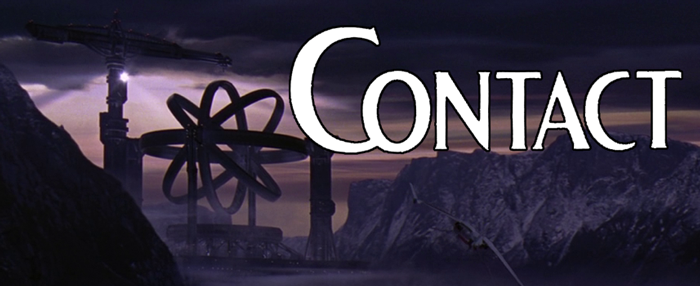
Here are my notes: The movie largely follows the book. The theme of Sagan attempting to reconcile Science and Religion is more expanded in the book, but that is to be expected. In the book, one of the first discoveries about the Machine is the interior chamber is a dodecahedron, reflecting the five people from around the world selected to go inside. The dodecahedron is a very unusual shape, formed from 12 pentagonal surfaces. In my article Comprisation Part Three I label the dodecahedron the "Black Sheep" of the Platonic Solids since it is the only one not naturally produceable from "Metatron's Cube." And it wasn't discovered by Plato, but rather by Pythagorus (see The Elements). But could Pythagorus be top of mind for Carl Sagan?

I guess the philosopher who coined the term for Carl Sagan's Cosmos book and Cosmos television series could be top of mind.
In the Movie, the protagonist, Ellie enters the spherical, single-person chamber by herself. But if I watch a clip in slow motion when the "walls become transparent" I can see a few frames of a dodecahedron framework that surrounded the sphere. It looks very much like this:
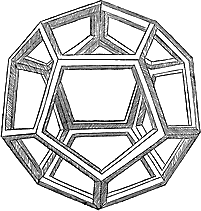
Leonardo DaVinci
The Divine Proportion, 1509
There are a few glimpses elsewhere if you watch carefully. But the dodecahedron framework was substantially hidden from view. Why?

I found the book doubles down on the danger warning as Sagan narrates:
"The ancient Pythagoreans, who first discovered the dodecahedron, had declared its very existence a secret, and the penalties for disclosure were severe."
I don't have an answer for why the dodecahedron was considered "Forbidden Knowledge" or why the movie also seems to reflect that in an occult way. (But then almost all of these connections are being discovered as I write.)
My main focus in reading was looking for Carl Sagan's description of "The Machine" versus the cinematic version. Was there the same connection to "Ezekiel's Wheel?" It turns out that in the book he addresses this directly:
"Many harebrained interpretations were also widely available. The Ancient and Mystical Order of the Dodecahedron was announced. The Machine was a UFO. The Machine was Ezekiel's Wheel."
I find it curious, that the association with the appearance of the Machine and Ezekiel's Wheel is dismissed so early, because it isn't until several chapters later that instructions for the external structure of the Machine are deciphered:
"A major substructure of the Machine was three exterior concentric spherical shells, arranged with axes perpendicular to each other, and designed to spin at high velocities. The spherical shells were to have precise and intricate patterns cut into them."
Sagan continues to refer to the "concentric spherical shells" and never calls them hoops, rings, or wheels. A technician character later names them "Benzels" and the term sticks. My thinking was that in a book you could describe what was happening, unseen beneath three layers of counter-rotating spheres, but for a movie, the Director (Robert Zemeckis) would have that cut-away so you could visually witness the action — "show not tell." So I accepted Ezekiel's "Wheel Within a Wheel" was not part of Sagan's vision and was actually a "harebrained interpretation" as he suggested. Until he writes...
"When completed, the Machine would look from the outside like one of those armillary spheres of the Renaissance astronomers. What would Johannes Kepler have made of all this?"
Kepler, really?
Review this section of my article "Comprisation Part Three." This is where an author begins to think someone is looking over their shoulder and cribbing ideas. Or perhaps "The Muse" gifts repeated inspirations. Or Carl Sagan was speaking to me from beyond the grave before I even watched or read Contact.
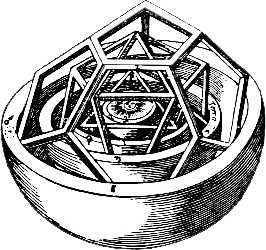
Kepler's Mysterium Cosmographicum
In reality, I think it's the ideas themselves that are intertwined. Like hiking in a small park, if multiple people enter at different trailheads, eventually they will all see the same sights.
However, Kepler's Mysterium is an illustration of a very unique idea and not, as Sagan writes, "one of those armillary spheres..." So what is an Armillary?
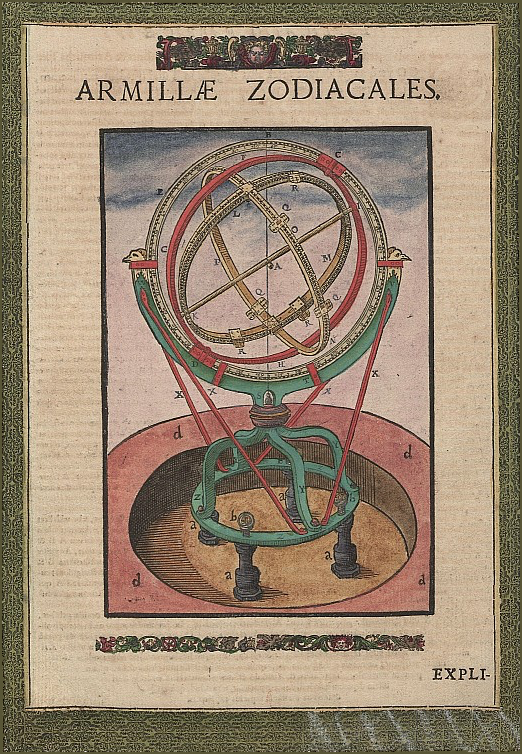
Tycho Brahe's Astronomiae Instauratae Mechanica, 1598
Suddenly we find something very familiar hidden behind a single obscure word: Armillary. It's not Kepler's solid concentric spheres. Renaissance astronomer Tycho Brahe's design above is three concentric rotating rings, like the Machine in the movie, like a 3-axis Gimble, and like the illustration of Ezekiel's Wheel. The word armillary comes from the Latin armilla meaning "circle or bracelet." So I think this is an indication Mr. Sagan hides meaning under other layers in his story.
Hidden Things are Occult
One of the chapter headings in the book is another obscure word: Palimpsest. The Ancient Greek origin of the word means "scrape + again" and refers to the process of scraping writing off pages in a book and then writing over the pages again. This recycling was done because book materials were expensive and rare. The result is that some ancient manuscripts can reveal earlier writing under x-ray or other modern examination. An expanded use of the word indicates content that is built up in layers, with traces of the original meaning or development hidden underneath. In the case of the Message in Contact, there are three layers: A stream of Prime Numbers, a historic Television broadcast, and finally blueprints for building the Machine.
I've not previously been much interested in the Occult, but felt some research was required while writing this. I watched a lightweight, 24-lecture series on "Secrets of the Occult" by historian Richard B Spence, PhD.
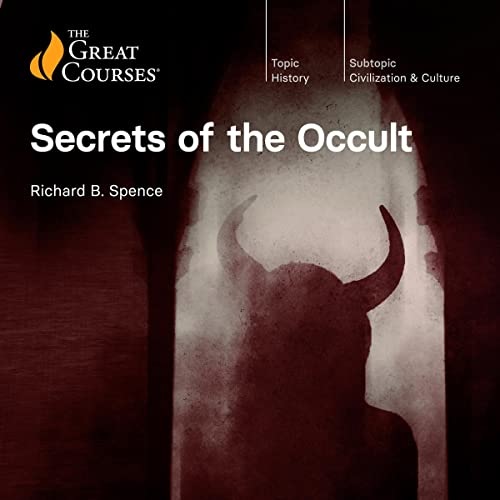
In the penultimate lecture, Professor Spence introduces examples of "Occult in Popular Culture", particularly the "Wizard of Oz." Similar to "Alice in Wonderland" the Oz story is an allegorical quest for enlightenment. It's the Hero's Journey with a female protagonist.

"Wizard of Oz" is a fun story to analyze, looking for layers of meaning. Something I learned from the "Secrets of the Occult" episode, however, was that it was retold, as a Soviet version titled "The Wizard of the Emerald City" by Alexander Volkov. This seemed like an odd detail for Spence to include, except when you research his bio and find his specialty is in Russian intelligence.
Volkov maintains many elements of L. Frank Baum's original. The story features a young girl and her little black dog, who both start off in Kansas and are carried away by a tornado to a magical land. All of Volkov's characters have different names: Toto is renamed Totoshka and Dorothy is renamed Ellie.
We're Not in Kansas Anymore
If you think Sagan (and his wife Ann Druyan) chose the name Ellie to honor Eleanore Roosevelt (as they claimed) or this is just another coincidence, you have not been paying attention. References are sprinkled throughout the book. Ellie in Contact is a pseudonym Dorothy from Oz:
"Ellie loved to listen to him. It was like entering Wonderland or the Emerald City."
"The Machine goes somewhere, she thought. If you had climbed aboard, it could carry you out of the stifling provincial towns of your childhood, to the great crystal cities. It was discovery and escape and an end to loneliness. She was a wonder junkie...Dorothy catching her first glimpse of the vaulted spires of the Emerald City of Oz... she was off to see the Wizard."
In both the movie and the book, Ellie was not selected to travel in the Machine to... Let's call it "the Land of Oz Vega." An adversary is picked instead, and in both cases, he is blown up, which opens the position for Ellie to go. Here is how the explosion is described in the book:
"Suddenly Drumlin was in the air, flying. Everything else seemed to be flying, too. It reminded her of the tornado that had carried Dorothy to Oz."
The name "Ellie" in Contact and the name "Ellie" in the Russian "Wizard of Oz" could be coincidental. But once you start looking, there's a Russian connection too. Starting on page 2 of Contact, Sagan conspicuously writes of Ellie as a very small child, "Inside there were beautiful glass tubes, A little like light bulbs. Some resembled the churches of Moscow she had seen pictured in a book."
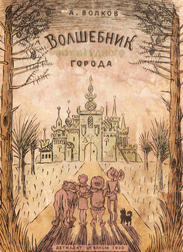
Volkov's Wizard of the Emerald City 1939
What precocious little Ellie is doing, and later denies, is taking the back off an old broken radio that is labeled "Danger. Do Not Remove." But she does anyway and notices a simple way to fix it. As a result Ellie:
"...came upon a voice talking excitedly—as far as she could understand, about a Russian machine that was in the sky, endlessly circling the Earth."
Sputnik or Soyuz?
Foreshadowing: Apophany.
My first thought is the "Russian machine" would be Sputnik. Ellie in the paragraph prior was only 3 years old, and the next time her age is mentioned she is 10. So how old was she when remembering churches in Moscow? Google says "Eleanore Ann Arroway, born 25th August 1964." But Sputnik was in 1957, so that can't be it. This begins a descent down the rabbit hole (for me).
Ellie, afraid of being discovered, turns off the radio and puts it back on the shelf. Finding her with sweaty palms and out of breath, her mother asks what she has been up to. Ellie says "Just thinking."
So the inciting incident in the book involves deception, danger, a message from the sky, and Russia. Was there a notable Russian space program that fit the timeline? In fact, in 1971 (Ellie would be 7) Soyuz 11 docked with the very first space station, Salyut 1, and three cosmonauts spent a record 23 days in space. Bingo.
Tragically, all three perished during reentry when a valve opened and they all asphyxiated. They were the first three human deaths in space. Danger. Do not Remove. Could this be Sagan foreshadowing danger to the future occupants of the Machine?
The dead cosmonauts were honored with minor planets named after them. One was 1790 Volkov.
OK. WAAAY too much coincidence. As an astrophysicist, Sagan would have to know about 1790 Volkov. Was the Russian author of Wizard of the Emerald City (Alexander Volkov) related to the dead cosmonaut Vladislav Volkov? Their ages could indicate father and son. But family information on either is too scarce. If that's the connection, Sagan would certainly feature "1790" in the story somewhere. It's not a prime number or a contemporaneous year. So using it would be a hidden confirmation. Does Contact have an encoded connection to Soviet Espionage?
A full scan of Contact shows "1790" appears nowhere in the text. Searching the book brings up another piece of missing information: Ellie's birthday is not in the book. "Born 25th August 1964" comes from the movie. In the movie, Ellie is an orphan (like Dorothy) but the family dynamic is more complex in the book. A dated letter and death year of her father puts Ellie's birth year at 1949. So she would be 7 or 8 years old in the book when Sputnik was "endlessly circling the sky." An encrypted message about Russians being killed in space is a wrong turn down a path of coincidences. It's an Apophany.
Reasons for Correspondance
There are several reasons otherwise unrelated pieces of information would match up:
- Pure Coincidence: No further meaning, intentional or unintentional.
- Literary Device: Obvious and intentional use of parable, analogy, or metaphor.
- Occult: Corresponding meaning is intentionally hidden from the "undeserving."
- Archetypes: Creative processes draw from a recognizable "Collective Unconscious."
- Epiphany: Divine revelations about the Order of the Universe.
The name "Ellie" used by both Contact and Wizard of the Emerald City may or may not be a coincidence, and it doesn't seem to matter. That Dorothy's story is a stated and underlying metaphor for Ellie's cosmic journey is intentional and clear. Even more so in the book, which continues past the Movie's finale and provides more reconciliation between Science and Religion.
Prior to fully decoding the message and understanding the blueprints of the Machine, Ellie is having a religious debate with two preachers, Joss and Rankin:
"I don't suppose you'd want to argue that the gods talked only to the ancient Greeks. What I am saying is, if God wanted to send us a message, and ancient writings were the only way he could think of doing it, he could have done a better job."
There's No Place Like Home
Jumping forward to the climax of the story, Ellie travels in the Machine and meets with one of the beings who sent the Message (in the form of her beloved Father) and Ellie asks about religion. Her "father" says the Universe is older than even his kind and there is a signature of the Creator hidden in the transcendental numbers such as pi. It's not been found on Earth because they have not computed the digits far enough. When Ellie returns to Earth almost no time has elapsed and without evidence, she is accused of imagining the whole cosmic trip. It's a clever swap on her previous stance, attacking religion for a lack of evidence. And also it's Dorothy waking up back in Kansas.
The movie omits the whole "numbers theme," yet provides an emotionally satisfying end at that point. Watch the movie. It's good.
In the book, however, Ellie starts a new journey to find a Message in the stream of non-repeating numbers of pi. This is similar to, but a shift from, her previous search amongst the radio waves, emitted from stars. This challenge represents a major "level-up," as finding a signature in the numbers would be a signature of the Creator, and not merely a signal of evolved intelligence.
Here is an excerpt from the final narrative paragraph of the book:
"As long as you live in this universe, and have a modest talent for mathematics, sooner or later you will find it. It's already here. It's inside everything. You don't have to leave your planet to find it...there it is, written small, the artist's signature."
"She found what she had been looking for."
What About the Machine?
An unexpected validation from Contact was the Pythagorean notion that true elements were mathematical, not physical, and drove the creation of the Universe. (See The Elements). I intend to make this a critical component of my theory that a functioning Prime Clock is the original Philosopher's Stone. A concept that would pre-date the failed Alchemical model. And the functioning nuclear weapon one.
But that still doesn't resolve the question about Sagan, the Machine, and Ezekiel's Wheel.
In an interview celebrating the 25th Anniversary of the movie,
Contact's Director, Robert Zemeckis, was quoted: "I’d keep saying, 'Carl, you never described it in the book, and you can’t describe it to me now.' So the machine was basically all my design."
Wow. With all the specifics in the book, the concentric spheres, the dodecahedron, and especially the ARMILLARY SPHERES, how could Zemeckis claim Sagan couldn't describe the Machine? Unless he didn't study the book, and the Machine wasn't Sagan's creation.

It's hard for me to tell now if my Vision of the Machine was inspired by Robert Zemeckis, or (Druyan+Sagan+drugs), or a Greek Philosopher, or Ezekiel. Or maybe it's the little hiking park and while wandering the trails we all came across the same amazing sight.
Whatever the source of my Vision, it led me to the successful implementation of a Prime Clock. Something that prevents the need for Trial Division (see The Numbers) and exponentially increases the speed for generating prime numbers. If we looked deep enough into their sequence could we find a message like Ellie did in Contact? Were the Pythagoreans correct to look for the Cosmic Creator in "Numbers and Shapes?"
Whence Armillary?
The biggest surprise comes from the source of Armillary Spheres. Not the term but the initial creation. Was it invented during the Renaissance? No, much earlier; apparently in Ancient Greece. Hipparchus, the "Father of Astronomy," credits Eratosthenes as the inventor of the armillary sphere!
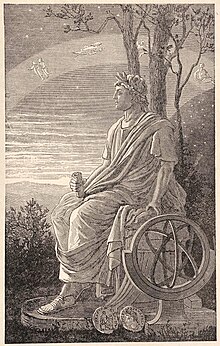
Hipparchus (c 150 BC) and an Armillary Sphere
Where do we remember Eratosthenes from? He was the inventor of the Sieve of Eratosthenes, the template for revealing prime numbers through trial division!
To get a glimpse of the scale for this synchronicity, check back on the article I wrote months ago, offhandedly suggesting the need for a Prime Clock...
The other articles in Boundaries of Objectivity will explore this further. You can leave thoughtful comments or questions at the link below.